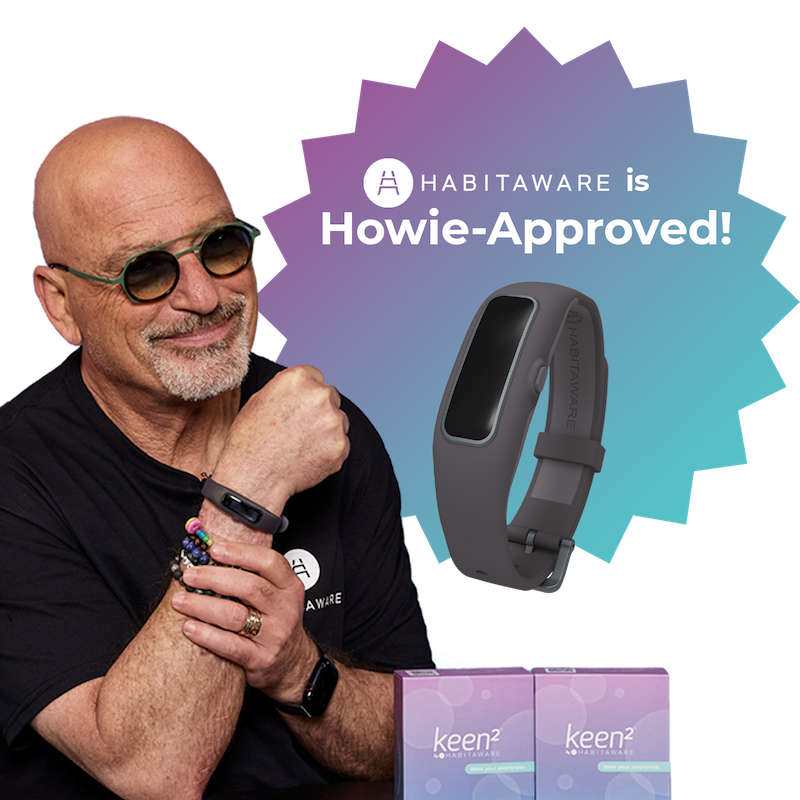The National Science Foundation (NSF) has supported HabitAware's mission to develop a novel platform technology for scalable data capture through Phase I, II, and IIB awards. This platform is essential to improving the accuracy of behavior detection algorithms for body-focused repetitive behaviors (BFRBs), including hair-pulling, skin-picking, and others. Our goal is to provide real-time, data-driven interventions for individuals struggling with these behaviors and to expand the capabilities of our technology for broader mental health applications.
BFRBs are often characterized by subtle, low-energy movements that traditional wearable devices are not equipped to capture effectively. Through the NSF-supported project, HabitAware has developed a custom data collection platform tailored specifically to these types of behaviors. This platform incorporates a wearable device, cloud infrastructure, and software tools that enable large-scale data collection and analysis in both controlled environments and real-world settings.
The NSF Phase I, II, and IIB awards have collectively driven the development and scaling of this platform, allowing HabitAware to gather more comprehensive datasets and refine our behavior detection models. The progression of these awards reflects our commitment to advancing mental health solutions through scalable, precise data capture technology.
NSF Phase I: The NSF Phase I award focused on building the foundation for HabitAware’s custom platform technology, designed to capture the unique motions associated with BFRBs. This phase was critical in establishing the viability of collecting large-scale, high-quality data specific to behaviors like hair-pulling and skin-picking.
During Phase I, HabitAware developed an initial hardware prototype equipped with motion sensors capable of detecting subtle wrist movements related to BFRBs. Our efforts were centered on creating a data collection system that could operate in both laboratory settings and real-world environments, ensuring that we could gather meaningful data across different contexts.
The key objective of Phase I was to validate that our platform could capture accurate, reliable data for the detection of low-energy behaviors, laying the groundwork for further development in subsequent phases.
NSF Phase II: The NSF Phase II award enabled HabitAware to expand on the progress made in Phase I, refining the hardware and scaling the data capture platform for broader use. This phase focused on improving the accuracy of the motion detection algorithms and enhancing the robustness of the data collection system.
In Phase II, HabitAware advanced the platform technology by integrating more sophisticated data analysis techniques and conducting simulations to fine-tune the behavior detection models. The system was tested extensively to ensure that it could accurately differentiate between BFRBs and other benign wrist movements. We also optimized the platform to handle larger datasets, enabling more comprehensive studies and real-time behavior monitoring in everyday environments.
Through partnerships with research institutions and clinicians, Phase II helped validate the system's reliability and accuracy, preparing the platform for wider adoption in both research and consumer applications.
NSF Phase IIB: The NSF Phase IIB award supports HabitAware's efforts to further scale the platform for large-scale data collection and analysis. This phase aims to enhance the platform's capabilities for remote, unsupervised data collection while ensuring that researchers and clinicians can access and analyze the data independently.
Phase IIB has focused on expanding the infrastructure of the data collection ecosystem, including the development of cloud-based tools for data management, annotation, and transfer. This phase allows HabitAware to decouple data acquisition from the lab, enabling remote and large-scale studies with minimal on-site supervision. Additionally, the platform’s flexibility allows for easy integration into a variety of research projects, empowering clinicians and researchers to gather valuable insights into BFRBs and other mental health behaviors.
This phase also includes ongoing work to improve the scalability and accessibility of the platform for broader mental health research, positioning HabitAware as a leader in wearable technology for behavior tracking.
The NSF Phase I, II, and IIB awards have collectively enabled HabitAware to develop a scalable, effective data capture platform that significantly advances the understanding and detection of BFRBs. Through this work, we have refined our motion detection algorithms, reduced false positives, and enhanced the overall accuracy of our behavior recognition models. Our platform is now capable of supporting large-scale data collection, providing valuable insights for both research and consumer applications.
These efforts have laid the foundation for future innovations in mental health technology, expanding HabitAware’s reach beyond BFRBs to address a broader range of behaviors and conditions. By creating a platform that is both flexible and scalable, we are ensuring that our technology can adapt to the needs of various mental health research initiatives and consumer-facing applications.
Header by Stephen Dawson


